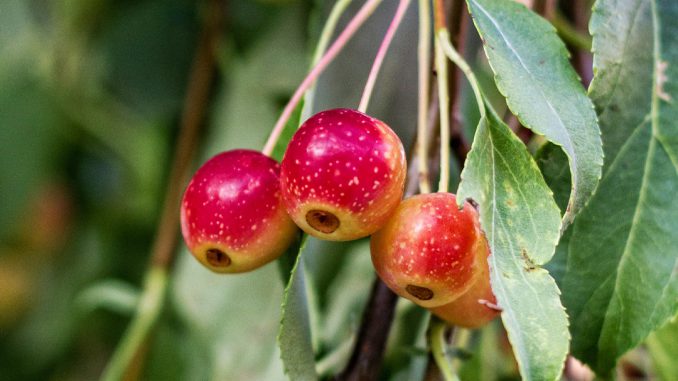
Whether north or south, the winter months are opportune times for considering a perfect tree selection that might be all you really need. And, if you’re unexpectedly home for the winter, you may find new appreciation for your cedar hedge and the challenge of heavy snow.
What makes a garden? Some familiar plant choices come to mind – roses, geraniums, ornamental grasses, tomatoes! But sometimes less is more, and making a garden with one magnificent tree might be all that you need to establish a comfortable place to set your chair and enjoy four-season beauty.
Selecting a tree with character, grace and four seasons of ornamental features quickly narrows the selection list. Many trees have a season or two of flowers and fruit, or autumn colour, but few can offer ornamental features year-round. For practical consideration, a perfect tree must be well behaved – no invasive root systems, no dense shade, no excessive maintenance, and no pest or disease vulnerabilities. Here are three trees that come close to perfection and can possibly transform a boring lawn or empty garden corner into the retreat of your dreams.
River birch (Betula nigra, hardy to zone 3b) is a stunningly beautiful native tree suitable for specimen use, with distinctive features setting it apart from familiar white birch. The generously peeling bark is tan to subtle pink, and the small and finely textured deep green foliage turns to gold in autumn. Delicate catkins dangle from the thinnest branches in early spring before leaves appear, and the distinctive peeling bark is a year-round feature. River birch is especially favoured by chickadees and nuthatches, charming little birds that hide nuts and seeds in the tree’s shaggy bark. River birch grows to 60 feet with a rounded 45-foot canopy, casting dappled shade…ideal for placement alongside a patio or seating area.
‘Red Jade’ crabapple (Malus ‘Red Jade’, hardy to zone 3b) is a widely spreading and low-growing ornamental crabapple. Its horizontal branches are smothered with pink-budded white flowers in spring, clusters of red fruits relished by birds in autumn, and a winter profile with cascading and trailing branches. The rich green, disease-resistant pointed foliage is slightly rippled. Generous clusters of small, apple-like berries are irresistibly attractive to foraging robins from late summer through fall. This is a good selection for small-garden owners with a love of classic crabapples, at maturity growing 10 feet tall and 15 feet wide, and suitable for a lawn specimen or filling a spacious corner. It can be planted directly below power lines with no interference, and the vigorously growing branches adapt well to thinning and pruning, if desired.
Ginkgo (Ginkgo biloba, hardy to zone 4) − or maidenhair tree − is described as the oldest tree on earth, dating back 270 million years in fossils. It is slow growing and long lived, pest-free and tolerant of drought and urban conditions, with a mature height of 50 feet. The ginkgo casts virtually no shade, as its distinctive foliage is closely attached to widely spaced branches, and a small footprint allows for companion planting at the base. Fan-shaped leaves turn deep golden yellow in autumn. The winter profile is strikingly architectural and the bark becomes vibrantly striped with maturity. Several hybrids are available, with lower height and compact form. ‘Autumn Gold’ and ‘Magyar’ have distinctive pyramidal form. ‘Mariken’ is a dwarf multi-stem shrub growing only 24 inches high and 30 inches wide, perfect as accent in raised garden beds and large permanent containers.
Cedar Hedges in Winter
A cedar hedge standing in fresh snow is a beautiful thing. But when heavy snowfall packs inside the hedge, splaying branches out and downward, returning to vertical form is not always certain. To keep cedar shrubs in uniform shape during winter weather, weave jute twine gently through the branches to add stability and maintain form when heavy snow falls. (Jute is a natural fibre and will eventually degrade if you forget to remove it in spring.)
Handling woody plants in freezing temperatures requires delicate attention. Frozen wood is susceptible to cracking, weakening the plant’s structure and opening paths to disease infection. The boughs of long needle pines, spruce, fir, false-cypress and junipers often accumulate heavy snow loads, weighing them down to the ground. It’s best for them to remain this way until natural thawing releases the branches (often within a few days, when strong sunlight returns). If absolutely necessary to remove heavy snow from coniferous branches, do this delicately, with no wrenching or twisting of the wood. Use a broom or leaf rake on the underside of branches, gently pressing them upward with a gentle bounce to release the snow accumulation. Never attempt to remove ice from coniferous plants, as this will certainly cause injury to foliage and wood. Allow ice to melt naturally when bright sunlight returns.


